Besides the fourth industrial revolution, the third green revolution is expected to change the way people do agriculture. The foundation of this revolution will be improvements in agriculture, water management, or environmental improvement. Currently, more and more projects that turn farming or water management use many outstanding technologies such as IoT, Big Data and AI to improve production processes, enhance product value and optimize labor, making them “smart”. This article will introduce the above topics.
1. Smart Agriculture is shaped from IoT
Smart agriculture or smart farm is a concept that refers to the management of farms and farming by applying modern technologies such as IoT, Big Data, drones, to increase the number of improve product quality and optimize farmer labor. Currently, smart agriculture is available in many places. These are the devices [1] that smart farming can use:
- Hardware: sensors for water, light, soil, temperature, humidity, temperature to manage them.
- Software: software that connects sensors and farms on the IoT platform.
- Connectivity: mobile, Internet, etc
- Positioning: Satellite, GPS, drones, etc.
- Robot: Machine equipment capable of automatic operation such as tractors, factories, etc.
- Big data analytics: analyze data from sensors, use machine learning to make recommendations, and more.
The infographic below by Beecham Research visualizes the above concept.
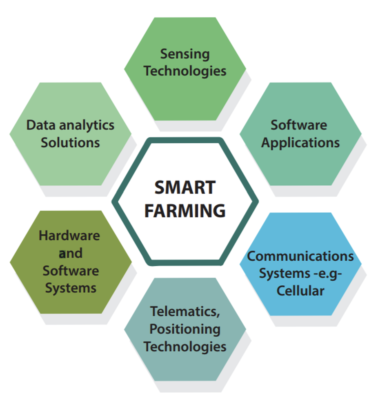
Source: https://www.beechamresearch.com/files/BRL%20Smart%20Farming%20Executive%20Summary.pdf
It can be said that IoT is the driving force of smart agriculture. IoT connect machines and sensors together and connect farms with farms to make farming processes synchronized and decision based on data. data from actual conditions.
The IoT-based farming cycle, according to iotforall [1], is shown in the cycle chart below:
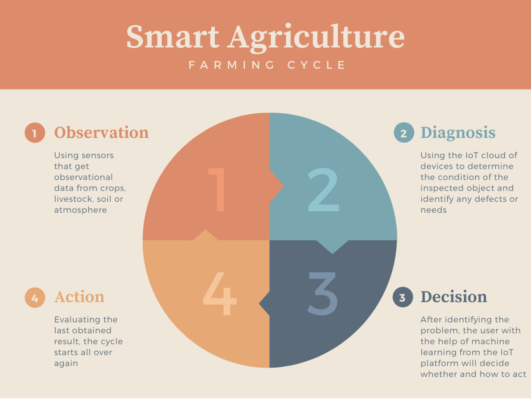 Farming cycle in smart agriculture. Made with Canva.
Farming cycle in smart agriculture. Made with Canva.
IoT is very important for smart agriculture. We won’t talk more about this topic within the scope of this article, but you can find a lot of other great articles about IoT on our blog.
2. Water Management: a combination of IoT, AI, and Big Data
Smart water management is the improvement of water management that features intelligent systems comprising a range of hardware and software, meters, sensors, and data storage, processing and visualization tools to Monitor, control, and regulate water quality water flow and maintain system-related equipment. Today, modern water technology is a series of IoT devices and software based on advanced technology that connects farmers with their farms. The architecture of the SWAMP project [2], an IoT smart agriculture project, shows you the profound impact of smart agriculture on all farming activities:

SWAMP Layered Architecture. Source: ncbi (https://www.ncbi.nlm.nih.gov/pmc/articles/PMC6359213/)
These systems are smart because they can connect devices together and have powerful data processing capabilities that form systems that interact directly with the manager. This system is capable of detecting, measuring, sensing problems and correcting them as well as proposing improved solutions based on real data. This intelligent system also automates and minimizes errors. Figures show that in Seoul (Republic of Korea) there are only 80 employees managing their water supply system. In 2018, Asian Development Bank (ADB) held a workshop on smart water management in Tashkent, Uzbekistan [2]. Here, speakers from Korea introduces a type of smart water management system:
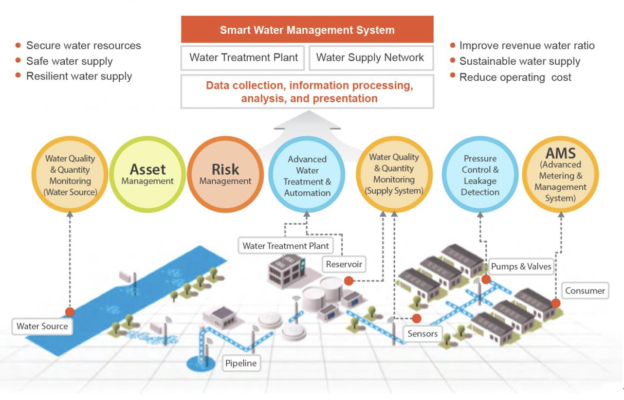
Smart water management systems in Republic of Korea. Source: You Kwangtae, CEO, UnU Civil & Environmental Engineering, Republic of Korea / ADB
(https://development.asia/explainer/what-smart-water-management)
Another example in this country is the smart water management system in Seosan city, where the new water system has improved water quality, fixed water leaks and provided management capabilities for the entire system. At the 2018 ADB’s workshop, the speakers presented 4 components of a smart water management system:
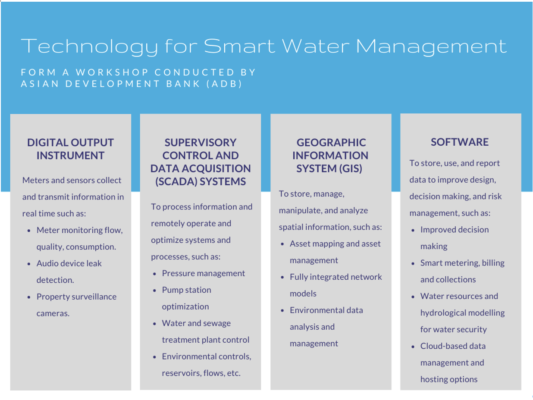
Technology for Smart Water Management. Source: ADB (https://events.development.asia/system/files/materials/2018/07/201807-public-private-partnerships-and-smart-technologies-water-sector-development-summary.pdf)
Smart systems like the water management system we introduce or smart agriculture initiatives bring about not only short-term effects but also long-term benefits. The long-term investment strategy for these intelligent systems comes from their superiority, which we present shortly.
3. Long-term, forward-looking benefits
3.1. Clear, transparent
With data collected throughout the system, stakeholders have accurate information about the real situation of their resources and status, thereby making decisions for the next step.
3.2. Low latency
In order to minimize the threat, the system needs to be as responsive to all threats it collects. With an intelligent system, a risk of contaminated water or unusual climate can be reflected as soon as it occurs, helping to minimize the consequences.
3.3. Automation and optimal use of human resources
IoT solutions replace humans in continuously monitoring, testing and evaluating water or soil conditions. In return, people operate the system to help them operate continuously and bring the greatest efficiency.
3.4. Cost optimization
IoT is the long-term choice because they bring automation which means cost savings for infrastructure as well as labor.
3.5. Sustainable, looking to the future
Conserving water, conserving soil, avoiding environmental pollution are the things that intelligent systems bring by optimizing calculations to both increase production and ensure the environment for long-term development. Taking advantage of this, people can completely advance to the next green revolution.
The following examples will say “futuristic” as well as smart agriculture or smart water management. It should be affirmed that smart water management is not only in agriculture, as you can see the examples of municipal wastewater systems in the Republic of Korea that we introduced above. In fact, inside smart farming projects, there is always a need for a smart water management system. We present the following practical examples to demonstrate the effectiveness of both systems and the necessity of water management in agriculture.
4. Smart agricultural projects in real life
Thanks to the application of smart agriculture, the following companies have succeeded, from improving farmers’ lives to modeling start-up projects from agriculture in the 4.0 industry:
- Rynan
Rynan is one of the prominent companies in implementing smart agriculture in Vietnam. Their project is smart rice farming in the Mekong delta applying a salinity measurement system, water management, and regulation system for rice and shrimp. Rynan uses automatic farming machinery and an automated packaging and storage system for finished products. [5]
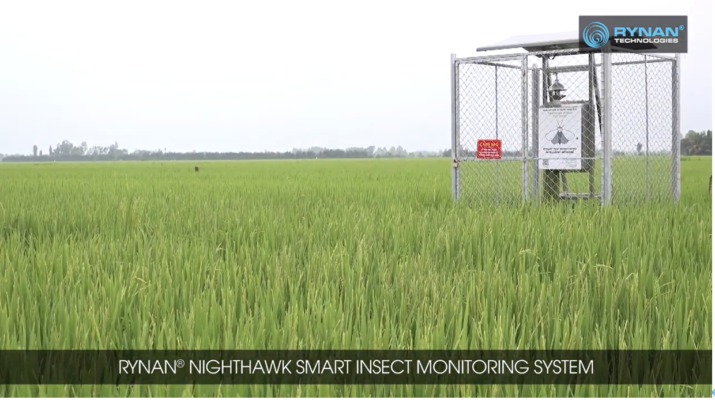
Rynan’s smart rice farming in mekong delta in Vietnam. Source: Rynan (https://youtu.be/NFksxKh0gmo)
- AeroFarms
AeroFarms owns a facility of more than 6,500 square feet in Newark, New Jersey [6]. This is the largest indoor vertical farm in the world. With advanced farming technology, AeroFarms says it can produce more than 907 tons of food per year with less water. Visit AeroFarms 360 Farm Tour here: https://youtu.be/YDQQj-WzT_U
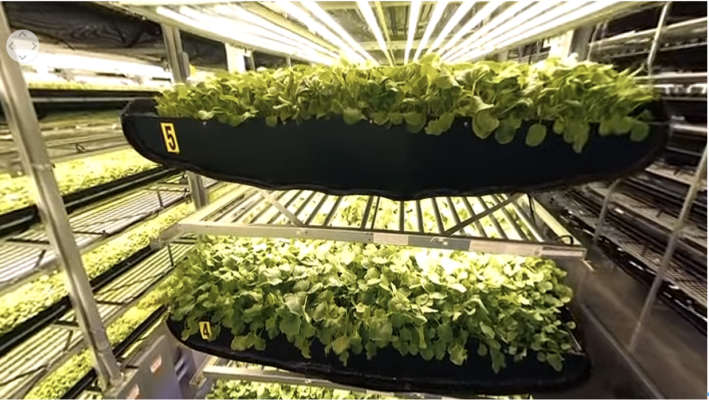 AeroFarms’s indoor vertical farm. Source: AeroFarms (https://youtu.be/YDQQj-WzT_U)
AeroFarms’s indoor vertical farm. Source: AeroFarms (https://youtu.be/YDQQj-WzT_U)
- Plenty
Plenty with the slogan “Plenty for all” owns a vertical farm specializing in growing vegetables and strawberries in the city. Plenty’s products are created to meet strict needs with less effort and space thanks to technology. This is a company invested by big technology companies like Amazon or Alphabet to build 300 vertical farms across China. The company is expected to produce 2 million kilograms of green vegetables per year, enough to feed 183,000 people. [7]
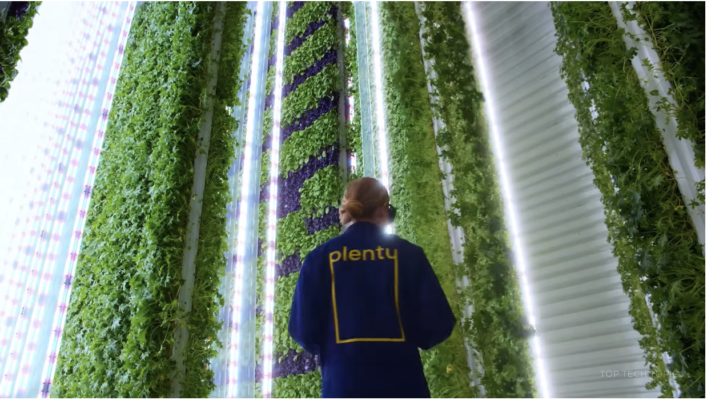 AeroFarms’s indoor vertical farm. Source: Plenty (https://www.plenty.ag/)
AeroFarms’s indoor vertical farm. Source: Plenty (https://www.plenty.ag/)
5. Bright future for us
A rare bright spot from the COVID-19 pandemic is that the environment becomes cleaner when people limit their activities. But as demand rises again, environmental pressures keep us wondering about the future of greens. The green revolution [8] is expected to change the way we negatively impact the environment while creating more jobs and improving people’s already miserable lives. Smart agriculture or environmentally friendly smart systems like water management bring great expectations for a bright future for ourselves and future generations.
